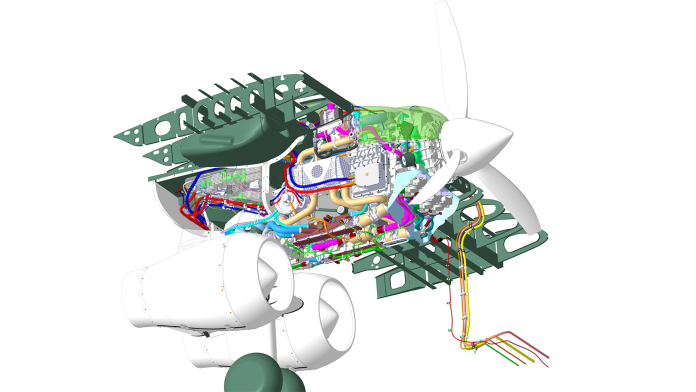Authors: Maria Chiara Massaro, Simone Pramotton, Paolo Marocco, Alessandro Hugo Antonio Monteverde, Massimo Santarelli
Publication Date: 15 April 2024
Category: Hydrogen
Article Link: https://www.sciencedirect.com/science/article/pii/S0196890424002073
DOI: https://doi.org/10.1016/j.enconman.2024.118266
Abstract (Official):
Recently, hydrogen and fuel cells have gained interest as an emerging technology to mitigate the effects of climate change caused by the aviation sector. The aim of this work is to evaluate the applicability of this technology to an existing regional aircraft in order to assess its electrification, with the aim of reducing greenhouse gas emissions and achieving sustainability goals. The design of a proton-exchange membrane fuel cell system (PEMFC) with the inclusion of liquid hydrogen storage is carried out. Specifically, a general mathematical model is developed, which involves multiple scales, ranging from individual cells to aircraft scale. First, the fuel cell electrochemical model is developed and validated against published polarization curves. Then, different sizing approaches are used to compute the overall weight of the hydrogen-based propulsion system, in order to optimize the system and minimize its weight. Crucially, this work underscores that the feasibility of hydrogen-based fuel cell systems relies not only on hydrogen storage but especially on the electrochemical cell performance, which influences the size of the balance of plant and especially its thermal management section. In particular, the strategic significance of working with fuel cells at partial loads is demonstrated. This entails achieving an optimal balance between the stacks oversizing and the weights of both hydrogen storage and balance of plant, thereby minimizing the overall weight of the system. It is thus shown that an integrated approach is imperative to guide progress towards efficient and implementable hydrogen technology in regional aviation. Furthermore, a high-performance PEMFC is analyzed, resulting in an overall weight reduction up to nearly 10% compared to the baseline case study. In this way, it is demonstrated as technological advancements in PEMFCs can offer further prospects for improving system efficiency.
GAT Editor’s Comments:
– Massaro et al. introduces a comprehensive integrated methodology encompassing multiple scales (from an individual cell to the entire aircraft) to advance fuel cell systems and integrate it with hydrogen storage design. Model-generated curves were compared with experimental data and adapted to the aircraft mission profile. Notably, the electrochemical model of the fuel cell was used in this study to minimise the system’s overall weight.
– Findings reveal that a fully hydrogen-powered aircraft weighs 40% more than its conventional counterpart, affecting feasibility given the constraints of existing aerodynamic structure.
– Results indicates performance of the electrochemical cell itself also affects feasibility of implementation. Specifically, to reduce the amount of hydrogen as well as mitigate the amount of heat generated through the process.
– The proposed high-performance proton-exchange membrane fuel cell (PEMFC) enables a weight reduction up to nearly 10% compared to the baseline case study. Massaro et al. recommends focusing on optimising the balance of plant in future studies to further reduce weight. This especially includes thermal management strategies.


